Last Updated on November 28, 2025
Introduction to procure to pay software
A procure-to-pay software plays a pivotal role in driving efficiencies in the procurement process. This involved procure-to-pay process demands meticulous attention, from sourcing suppliers and negotiating contracts to managing invoices and tracking payments. However, without the right tools in place, organizations often find themselves grappling with inefficiencies, bottlenecks, and missed opportunities.
Procure-to-pay software is a dependable solution designed to revolutionize the procurement process.
If you are exploring such solutions, here’s an in-depth analysis of the top 10 procure-to-pay software solutions available in 2023.
Read more: Procurement KPIs Guide: Top 10 Metrics to Measure Your Success
List of TOP 10 procure to pay P2P software
Here are the top 10 procure-to-pay software available in the market:
- SAP Ariba
- Coupa
- Basware
- Zip Intake-to-Procure
- PRM360
- Precoro
- GEP Smart
- Procurify
- Oracle Procurement Cloud
- MHC Software
Comparison of the TOP 10 procure-to-pay software
Name |
Market segment |
Free trial |
Starting price |
Overall rating |
Ease of use rating |
SAP Ariba |
Enterprise |
No |
Contact for pricing |
4.0 out of 5 |
8.2 |
Coupa |
Enterprise |
No |
Contact for pricing |
4.2 out of 5 |
8.8 |
Basware |
Enterprise |
No |
Contact for pricing |
3.9 out of 5 |
8.0 |
Zip Intake-to-Procure |
Mid-market |
No |
Contact for pricing |
4.8 out of 5 |
9.2 |
PRM360 |
Enterprise |
Yes |
Contact for pricing |
4.8 out of 5 |
9.8 |
Precoro |
Mid-market |
Yes |
$35 per month per user |
4.7 out of 5 |
9.4 |
GEP Smart |
Mid-market |
Yes |
Contact for pricing |
4.4 out of 5 |
8.1 |
Procurify |
Mid-market |
No |
$2,000.00 Per Month |
4.6 out of 5 |
9.2 |
Oracle Procurement Cloud |
Enterprise |
No |
$650 per user/ per month |
4.1 out of 5 |
8.0 |
MHC Software |
Enterprise |
No |
Contact for pricing |
4.6 out of 5 |
8.8 |
10 Best procure-to-pay software in 2023
Let’s look at the ten procure-to-pay software and understand their benefits.
1. SAP Ariba
SAP Ariba is a leading procure-to-pay software solution that revolutionizes the procurement process for organizations. With its robust features and capabilities, SAP Ariba simplifies complex steps by replacing them with an automated experience. As a result, employees can make informed and efficient buying decisions, ensuring organizations achieve the best possible outcomes.
Moreover, SAP Ariba offers advanced procure-to-pay tools that automate manual processes, saving time and reducing the risk of errors. It also helps foster close collaboration with suppliers, enabling seamless communication and improving overall supply chain efficiency.
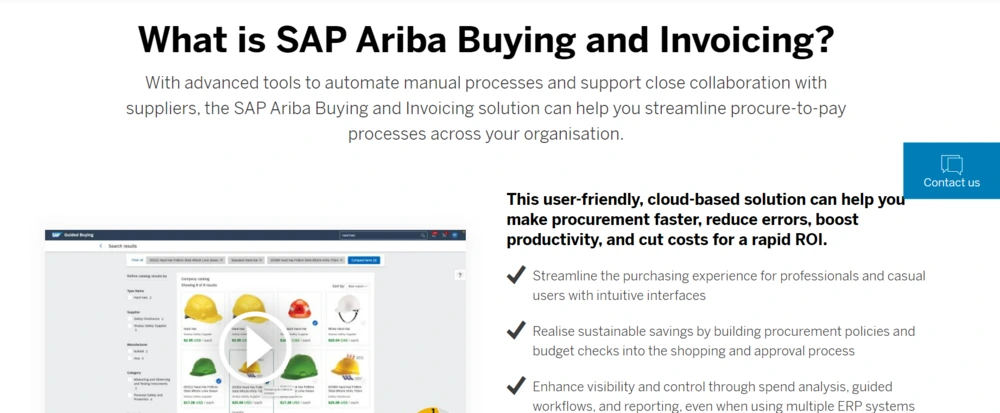
Key features and functionalities
- Cloud-based solution
- Intuitive user interface
- Shopping and approval budget checks
- Spend analysis, guided workflows, and reporting
Benefits
- Streamlined purchasing experience for everyone
- Realized sustainable savings through procurement policies
- Enhance visibility and control over the entire purchasing process
Industries using SAP Ariba
- Information Technology and Services
- Oil & Energy
- Electrical/Electronic Manufacturing
- Financial Services
Market segment
Enterprise
Pros and cons
Pros |
Cons |
|
It works well with ERP and synchronizes every transaction |
According to a review, the software makes it difficult to customize their business processes |
|
It offers simplified requisitions and converts them to purchase orders seamlessly |
According to a review, the platform requires extensive training |
Pricing and plans
Please get in touch with the SAP Ariba team for pricing.
Ratings
4.0 out of 5 (G2)
Quick Read: Purchase Requisition vs Purchase Order: A Comparative Guide
2. Coupa
Coupa empowers organizations with complete visibility of their spending through its robust capabilities. It enables effective tracking and management of expenditures, which helps overcome issues related to inefficient spend management. With Coupa, organizations can monitor and analyze spending patterns and optimize procurement strategies.
Coupa’s focus on compliance also helps businesses adhere to regulations and internal policies, mitigating risks and enhancing overall operational efficiency. As a result, the procurement platform enables organizations to drive significant savings and achieve their procurement goals.
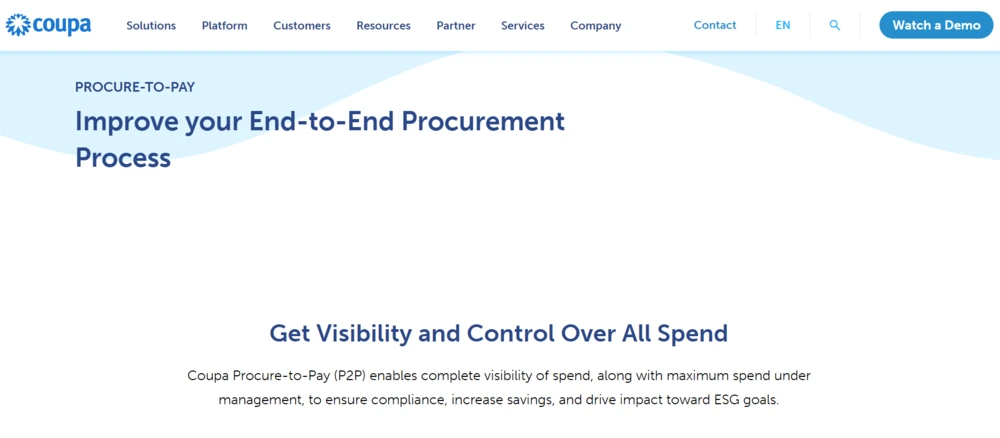
Key features and functionalities
- Purchase requisitions simplified
- E-invoicing options for every supplier
- Keep up with global regulations through compliant invoicing
- Detect fraud intelligently with spend management guard
Benefits
- Enhances user experience for maximum adoption and value
- Connects the entire organization’s spend for more value
- Saves precious labor hours and helps organizations get more out of their employees
Industries using Coupa
- Computer software
- Information technology and services
- Retail
- Financial services
- Telecommunications
Market segment
Enterprise
Pros and cons
Pros |
Cons |
|
The customer value support is excellent and helps users understand the product better |
According to a review, the pricing is a concern for international operations |
|
The user interface is simple and makes it convenient for everyone |
According to a review, some features are challenging to understand |
Pricing and plans
Please get in touch with the Coupa team for pricing details.
Ratings
4.2 out of 5 (G2)
Quick Read: 10 Best Spend Management Software for Enterprises
3. Basware
Basware offers comprehensive features to streamline the procurement process. With its integration capabilities, Basware seamlessly connects with existing procurement or ERP systems, ensuring all purchase order (PO) sources are covered. In addition, the integration eliminates manual data entry and enhances overall efficiency.
Thanks to its advanced, cost-efficient functionalities, Basware also enables organizations to realize significant savings in less than 12 months. Furthermore, Basware provides visibility and control over all spend categories, allowing businesses to monitor and manage their expenses effectively.
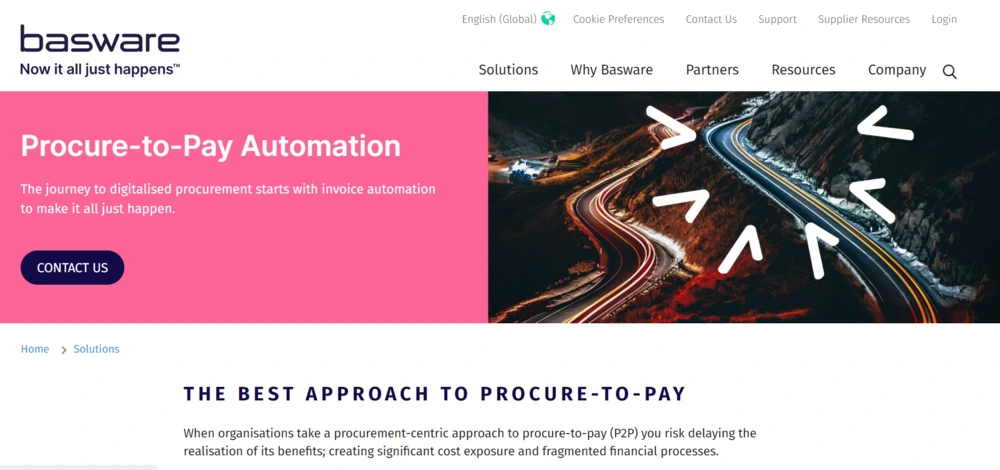
Key features and functionalities
- Automation of invoice ingestion
- Touchless accounts payable automation
- Increase control with e-procurement
Benefits
- Improve your bottom line through automated processes
- Minimize risks in finance operations
- Improve suppliers’ relationships on the platform without a need to register them while still capturing all their details accurately
Industries using Basware
- Computer software
- Financial services
- Pharmaceuticals
- Information technology and services
Market segment
Enterprise
Pros and cons
Pros |
Cons |
|
The platform is intuitive and easy to use |
According to a review, changing approvers can involve a little hassle |
|
The e-invoice feature helps save time and resources |
According to a review, there is no proper documentation to guide users about the platform’s functionalities |
Pricing and plans
Please get in touch with the Basware team for pricing details.
Ratings
3.9 out of 5 (G2)
Quick Read: What Is Purchase Order Automation and How to Do the PO Process?
4. Zip Intake-to-Procure
Zip Intake-to-Procure brings simplicity and efficiency to the procurement process. The platform ensures employee adoption even without extensive training. With Zip Intake-to-Procure, organizations can effortlessly enforce purchasing policies and guidelines, promoting compliance.
Furthermore, the software simplifies the management of purchase orders to eliminate mundane tasks and reduce employee burden. The functionality helps streamline operations and enables faster purchasing cycles. Additionally, Zip Intake-to-Procure provides complete visibility into accounts payable, allowing companies to track and monitor payment processes easily.
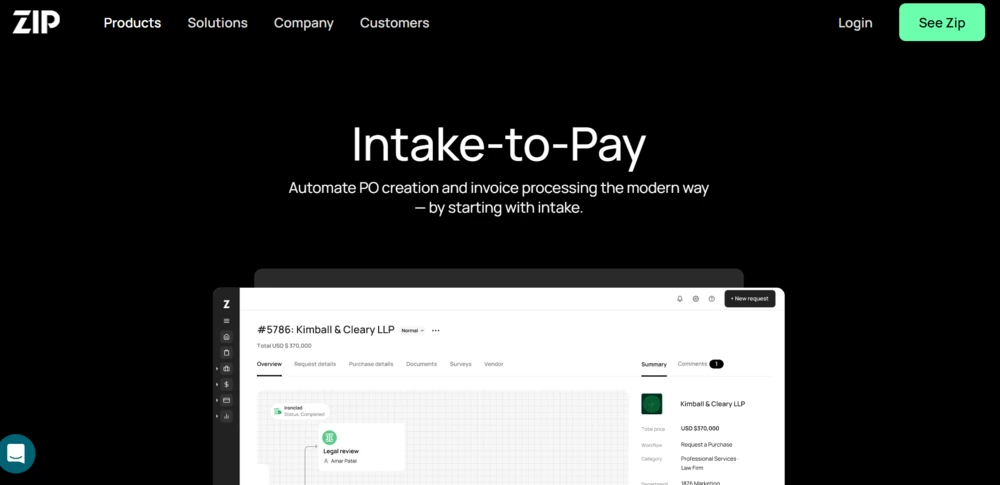
Key features and functionalities
- Approval workflows for enhanced visibility
- Vendor management for improved supplier relationships
- Automated renewal management for improved decision-making
- PO management without any friction
- AP automation for enhanced approvals and invoice management
- Global payments through a centralized solution
Benefits
- The consumer-grade software allows you to scale the procure-to-pay function seamlessly
- Automated PO creation enables a hassle-free process
- Automated invoice processing for increased accuracy and efficiency
Industries using Zip Intake-to-Procure
- Computer software
- Information technology and services
- Financial services
- Logistics and supply chain
- Information services
Market segment
Mid-market
Pros and cons
Pros |
Cons |
|
The UI is easy to learn and use, along with a seamless flow of purchases |
According to a review, the reporting functionality needs further enhancement |
|
The approval process is simple and promotes due diligence |
According to a review, uploading agreements can be tedious |
Pricing and plans
Please get in touch with the Zip Intake-to-Procure team for pricing details.
Ratings
4.8 out of 5 (G2)
Quick Read: 9 Best Vendor Payment Management Software
5. PRM360
PRM360 consolidates all individual procurement processes into a unified platform. By incorporating various stages of the procure-to-pay cycle under one umbrella, PRM360 streamlines operations and enhances overall efficiency. The online bidding process enables organizations to access a range of offers and select the best options available.
PRM360 also provides automatic reminders to vendors for timely invoice submission, ensuring prompt processing and minimizing delays. The software also offers online approvals, allowing for efficient clearance of invoices and other procurement-related requests.
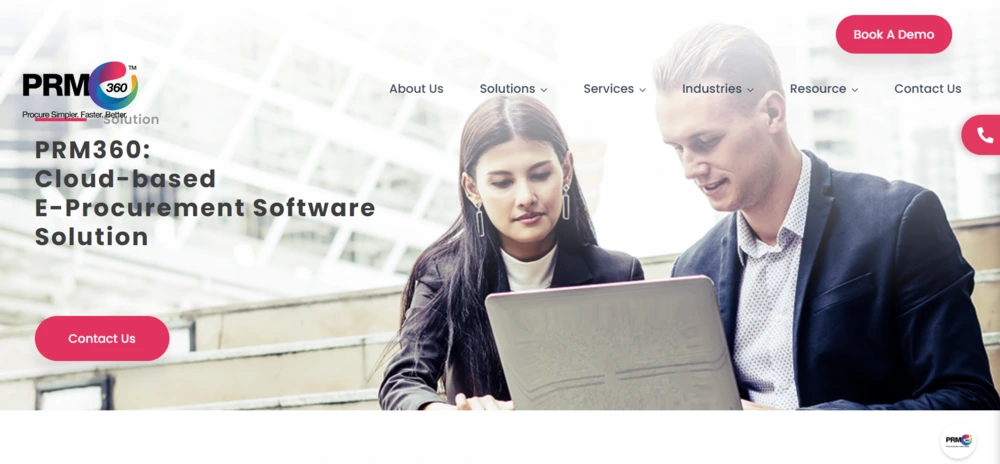
Key features and functionalities
- Online bidding process
- Automatic reminders to vendors
- Online approvals for clearance
Benefits
- Increased engagement with sales and marketing teams
- Transparency of pricing and tender details
- Faster turnaround time for e-procurement-related transactions
- Detailed analytics for driving informed decisions
Industries using PRM360
- Apparel and fashion
- Pharmaceuticals
- Textiles
- Hospital and healthcare
- Chemicals
Market segment
Enterprise
Pros and cons
Pros |
Cons |
|
It has a seamless and well-organized vendor bidding process |
According to a review, there can be an improvement in communication of issue resolution |
|
It has a simple UI and syncs with ERP systems |
According to a review, there is a need for an inbuilt workflow tool |
Pricing and plans
Please get in touch with the PRM360 team for pricing information.
Ratings
4.8 out of 5 (G2)
Quick Read: Vendor Payments: Meaning and Process
6. Precoro
Precoro is a reliable procure-to-pay software solution that brings automation and efficiency to the procurement process. With its advanced features, Precoro effectively eliminates manual work, reducing the need for tedious paperwork and manual data entry.
The software streamlines purchasing processes, enabling organizations to simplify operations and save significant time and cost. Automating purchase order generation, supplier management, and invoice processing helps procurement teams focus on strategic decision-making rather than administrative tasks.
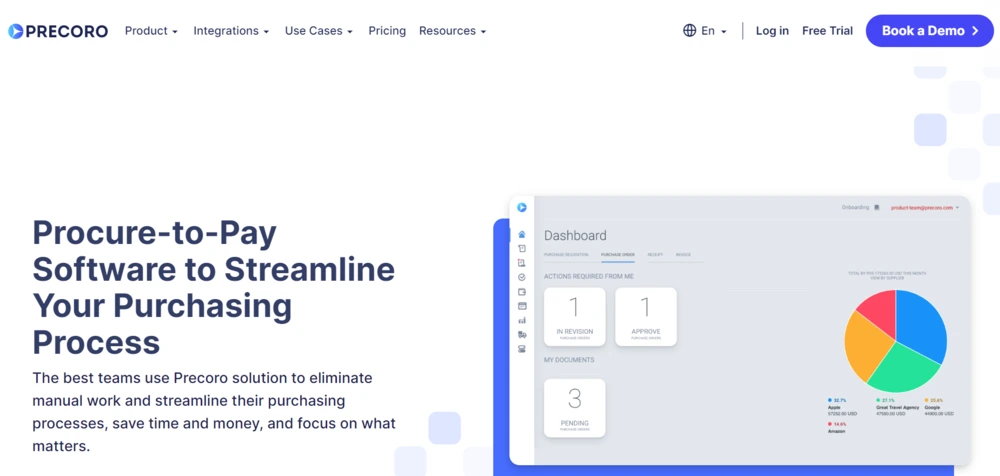
Key features and functionalities
- Cloud-based software solution
- Seamless approval workflows
- Real-time data and analytics
Benefits
- Accessible on mobile devices for on-the-go approvals
- Verification routes and instant notifications for approvals
- Data analysis from reports and import into accounting systems
Industries using Precoro
- Marketing and advertising
- Information technology and services
- Computer software
- Retail
- Health, wellness, and fitness
Market segment
Mid-market
Pros and cons
Pros |
Cons |
|
Creating orders is simple due to the consolidation of features |
According to a review, invoice processing is slow |
|
The system is easy to use and has good clarity |
According to a review, the invoice system should enable the auto-addition of information from existing suppliers |
Pricing and plans
$35 per month per user billed annually (for small teams). Contact the Precoro team for pricing details for larger teams with more than 20 members. Here’s a quick glance at their pricing details.
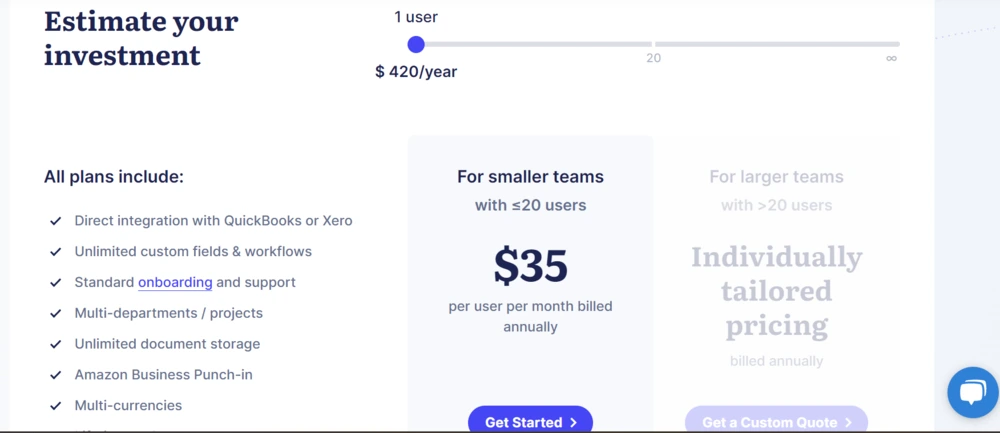
Ratings
4.7 out of 5 (G2)
Quick Read: 12 Best Invoicing Software
7. GEP Smart
The software offers a range of benefits to organizations seeking to enhance their procurement processes. GEP Smart provides an intuitive, user-friendly interface, creating an easy-to-use, consumer-like purchasing experience. In addition, it enables widespread adoption among employees, leading to increased efficiency and better compliance with procurement policies.
GEP Smart also helps organizations improve compliance and manage spend effectively. By consolidating and automating procurement activities, businesses gain better visibility and control over spending. In addition, it ensures adherence to regulations and optimizes cost savings.

Key features and functionalities
- Easy requisition and purchasing
- User-friendly catalogs
- Trackable purchase orders
- Invoice management
- Dynamic discounting
- Comprehensive workflows
Benefits
- Automated processes reduce processing time and paperwork
- Analyze spending patterns by category, supplier, or geography
- Configure goods received by the commodity
- Maintain a robust audit log
Industries using GEP Smart
- Oil and energy
- Pharmaceuticals
- Marketing and advertising
- Electrical/electronic manufacturing
Market segment
Mid-market
Pros and cons
Pros |
Cons |
|
The data from the platform helps save expenses |
According to a review, there can be a lag with the integration of documents |
|
The platform offers real-time data and analytics from improved decision-making |
According to a review, setting up the system can be complex and challenging |
Pricing and plans
Please get in touch with the GEP Smart team for pricing details.
Ratings
4.4 out of 5 (G2)
Quick Read: Top 10 Procurement Software Solutions in 2023
8. Procurify
Procurify is explicitly designed for mid-sized businesses, delivering a seamless and user-friendly experience. With Procurify, organizations can streamline their procurement processes, from requisition to payment, ensuring a smooth and efficient workflow.
It enables accountable and responsible purchase decisions by providing real-time visibility into budgets and spending limits. Procurify empowers employees to make informed purchasing choices while adhering to organizational policies. With Procurify, mid-sized businesses can optimize their procure-to-pay operations and drive responsible purchase decisions.
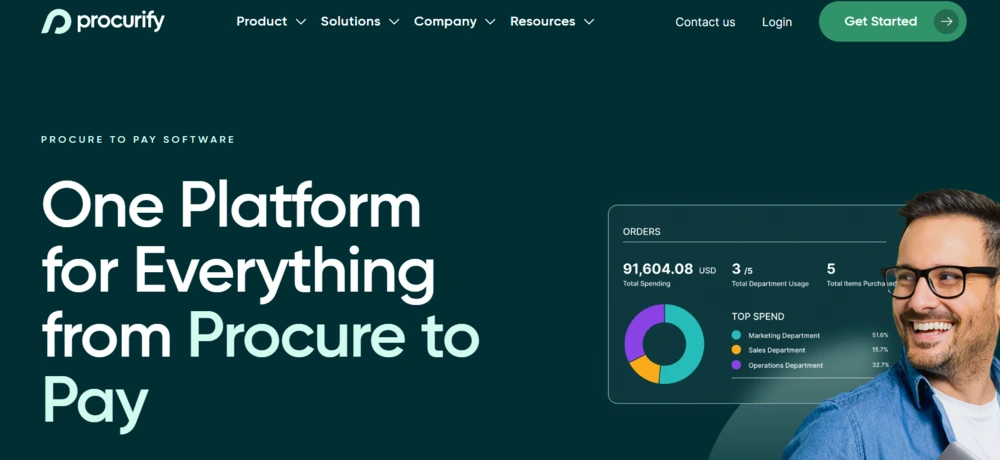
Key features and functionalities
- Modernizes the requisition process
- Enables more strategic purchasing decisions
- Enables tracking and payment of invoices from a single platform
- Offers real-time budget and spend insights
Benefits
- Request and approve on the go with the mobile app
- Create and send POs to vendors in seconds
- Get enhanced context for every invoice with centralized POs and packing slips
- Custom budgets categories based on departments/account codes
Industries using Procurify
- Education management
- Non-profit organization management
- Biotechnology
- Primary/secondary education
Market segment
Mid-market
Pros and cons
Pros |
Cons |
|
The platform is seamless and allows the quick creation of POs and catalog items |
According to a review, there’s no scope to edit incorrect information midway when creating a PO |
|
The platform offers ease of ordering from multiple vendors |
According to a review, order history for catalog items is not visible without running a report |
Pricing and plans
Procurify has a simple plan of $2,000.00 per month. The pricing offers a host of features designed for efficient procurement operations.
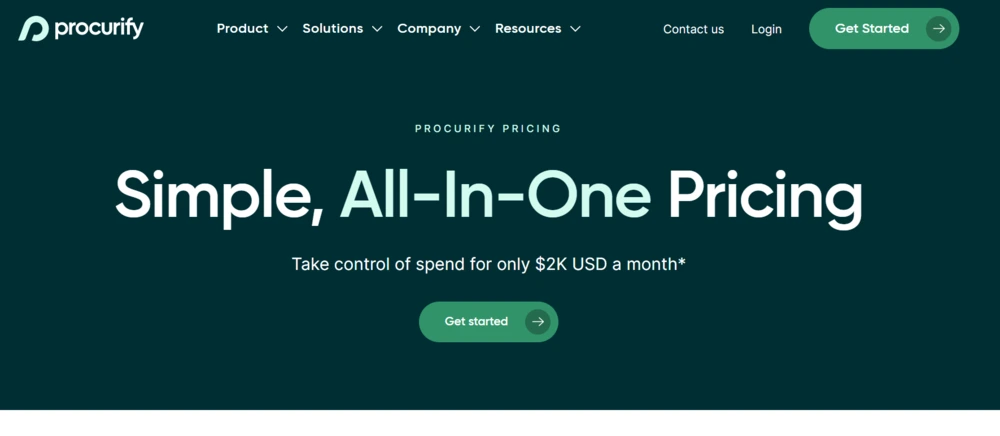
Ratings
4.6 out of 5 (G2)
Quick Read: Purchase Order and Invoices: Definition and Differences
9. Oracle Procurement Cloud
This procurement software is an integrated source-to-settle suite that revolutionizes the procure-to-pay process. The software automates essential business processes, reducing manual effort and improving operational efficiency.
With its robust features, Oracle Procurement Cloud enables strategic sourcing by providing organizations with advanced tools to optimize supplier selection, negotiate contracts, and manage supplier relationships effectively. Furthermore, it simplifies buying, resulting in lower risk and improved savings.

Key features and functionalities
- Simplify the shopping experience
- Improve spend compliance
- Streamline purchasing and payments
Benefits
- Maximized user adoption through consumer-like, guided experience
- Intuitive search to find goods and services quickly
- Negotiated prices and compliant buying
- Configurable approval rules for spend compliance
Industries using Oracle Procurement Cloud
- Oil and energy
- Information technology and services
- Retail
- Internet
- Construction
Market segment
Enterprise
Pros and cons
Pros |
Cons |
|
It is a cloud-based application that is scalable and adaptive to changing business needs |
According to a review, customer support can improve |
|
The user interface, reports, and inquiries are helpful for users |
According to a review, the pricing is on the higher side for small businesses |
Pricing and plans
$650 per user/ per month
Ratings
4.1 out of 5 (G2)
Quick Read: How to Form a Successful Procurement Plan
10. MHC Software
MHC Software is a cutting-edge procure-to-pay software that is an end-to-end automation platform. It empowers businesses to streamline their procurement processes through its comprehensive capabilities. The platform enables organizations to eliminate tedious tasks associated with procure-to-pay (P2P) processes, like manual data entry and paperwork.
Automating these tasks helps businesses increase efficiency and agility within their procurement operations. As a result, organizations can focus on strategic decision-making, supplier management, and optimizing cost savings rather than getting bogged down by administrative tasks.
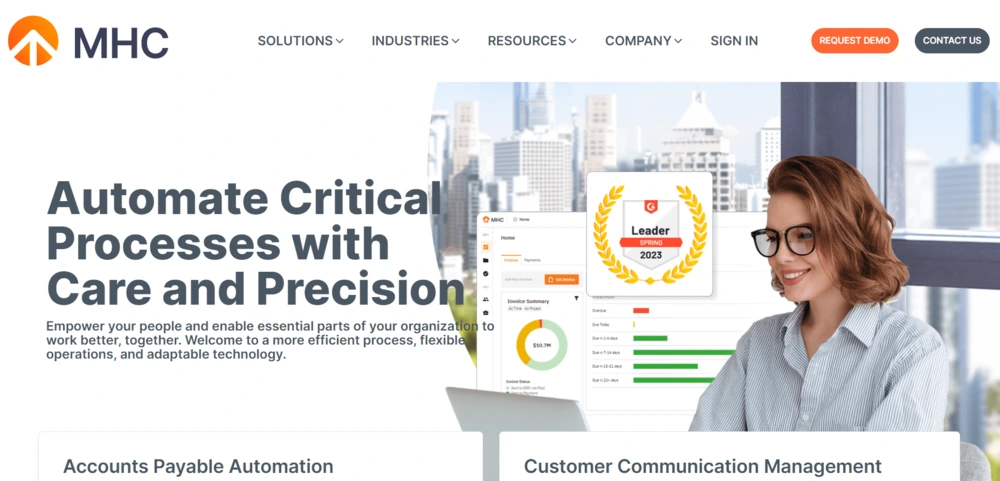
Key features and functionalities
- Invoice automation
- Payment automation
- AP tax and compliance documents
- No-code solutions
Benefits
- Eliminates manual invoice process and data entry
- Strengthen supplier relationships through a streamlined AP invoice and payment process
- Get accurate data and tracking through an automated compliance process
Industries using Oracle Procurement Cloud
- Hospital and healthcare
- Government administration
- Primary/secondary education
- Retail
- Utilities
Market segment
Enterprise
Pros and cons
Pros |
Cons |
|
Users can create documents for clients and upload/import them online |
According to a review, testing changes on the platform can be tedious |
|
The customer support and technical team meet user requirements comprehensively |
According to a review, the software can be challenging to use for new users |
Pricing and plans
Please get in touch with the MHC Software team for pricing information.
Ratings
4.6 out of 5 (G2)
Quick Read: Sourcing vs Procurement: A Complete Guide On Key Differences
What is procure-to-pay software?
Procure-to-pay software, or P2P software, helps streamline and automate the procurement process. It includes all the steps in purchasing goods or services, from requisitioning and sourcing suppliers to invoicing and payment. Procure-to-pay software eliminates manual and paper-based processes, which helps companies manage procurement activities efficiently.
The software centralizes and automates purchase order creation, vendor management, invoice processing, and more. As a result, organizations can experience transparency and compliance throughout the procurement lifecycle. Introducing procure-to-pay software helps organizations improve operational efficiency, optimize cost savings, and gain better control over their procurement activities.
Types of procure-to-pay software
Here are some common types of procure-to-pay software based on the specific features, functionalities, and target audience:
1. Integrated suites
Procure-to-pay software solutions like Oracle Procurement Cloud offer a comprehensive suite of modules. The platform covers the entire procurement process, from sourcing and supplier management to invoicing and payment. There’s end-to-end functionality and the software suits organizations that want a unified platform to manage their procurement operations.
2. Best-of-breed solutions
P2P software solutions focus on specific aspects of the procure-to-pay process, like e-sourcing and invoice automation. They offer specialized features in their respective areas and are ideal for organizations seeking to enhance particular aspects of their procurement workflow.
3. Cloud-based solutions
These solutions offer scalability and easy deployment as they do not require on-premises infrastructure. Therefore, they suit companies looking for cost-effective and agile solutions.
4. On-premises solutions
On-premises P2P solution is installed and operated within an organization’s infrastructure. These solutions provide enhanced control over data security and customization options. They are thus preferable for organizations with specific compliance requirements or complex integration needs.
5. Industry-specific solutions
Some procure-to-pay solutions cater to specific industries like healthcare, manufacturing, or retail. These solutions offer tailored features addressing the unique requirements and regulations of the respective sectors.
Importance of procure-to-pay software
Here are some key reasons highlighting the importance of procure-to-pay software:
- Efficiency and time savings: With advanced automation and streamlining of manual procurement processes. You can say goodbye to time-consuming tasks like paper-based documentation and manual data entry. Automation significantly reduces human error and accelerates procurement cycles. Enhanced efficiency and time savings help organizations achieve better productivity and meet deadlines effectively.
- Cost savings and spend control: Automation of the procurement process allows organizations to track and analyze spending patterns. They can also identify cost-saving opportunities and negotiate favorable contracts with suppliers. Additionally, the software helps enforce purchasing policies to ensure compliance and reduce maverick spending.
- Enhanced supplier management: The software facilitates seamless collaboration and communication with suppliers through a centralized platform. The platform manages supplier information, contracts, and performance details in one place. It helps companies build stronger relationships with suppliers, negotiate better terms, and ensure timely delivery of goods or services.
- Compliance and risk management: The software ensures procurement activities adhere to predetermined rules and guidelines. There’s thus less risk of non-compliance, fraud, and errors. In addition, implementing controls and approval workflows further allow organizations to establish transparent and auditable processes that mitigate risks and protect reputation.
- Data-driven insights and reporting: There’s valuable data and analytics on offer with actionable insights into the procurement performance. Organizations can access real-time reports and dashboards to track KPIs and supplier performance. A data-driven approach enables organizations to make informed decisions and drive continuous process optimization.
Read about: What Is Spend Analytics in Procurement?
What are the benefits of using procure-to-pay software?
Here are some benefits of integrating a procure to pay software into your procurement process:
- Process efficiency: Procure-to-pay software automates manual and repetitive tasks, which reduces paperwork and processing time. The streamlined approach increases operational efficiency and allows procurement teams to focus on strategic activities. It also minimizes errors and delays, leading to faster procurement cycles.
- Cost savings: The software allows for the automation of sourcing, purchasing, and payment processes. As a result, businesses can negotiate better prices with suppliers and enforce compliance to prevent maverick spending. Therefore, these measures lead to significant cost savings and improved expense management.
- Enhanced visibility and control: There’s real-time visibility into procurement activities like purchase requests and spending trends. Transparency enables organizations to monitor and track procurement processes and ensure compliance with internal policies. It also facilitates better decision-making based on up-to-date information.
- Supplier relationship management: Centralized supplier information, contracts, and performance data help improve supplier relationships. The software further helps streamline communication to facilitate smoother interactions with suppliers.
- Compliance and risk mitigation: The software enforces procurement policies, approval workflows, and audit trails. These activities minimize the risk of non-compliance and fraud. The software also enhances data security to mitigate potential risks associated with manual processes.
Quick Read: 10 Best Expense Management Software and Tools in 2023
Features of procure-to-pay software
Procure-to-pay software offers the following features designed to streamline and optimize the procurement process:
1. Purchase requisition and approval
Users can create and submit purchase requisitions electronically. The software also includes workflow capabilities for automated approval routing for adherence to procurement policies and budget limits.
2. Supplier management
Organizations can centralize and manage supplier contact details and performance evaluations. The software also facilitates supplier onboarding and contract management.
3. Sourcing and RFx
Users can leverage tools for sourcing suppliers and conducting requests for proposals (RFPs), requests for quotes (RFQs), and requests for information (RFIs). These features help organizations identify suitable suppliers and select the best offers.
4. Purchase order management
The feature allows users to generate and manage purchase orders electronically. The platform also includes capabilities for tracking order status and facilitating communication between buyers and suppliers.
5. Invoice processing and approval
The software automates invoice processing and matches invoices with purchase orders and receipts. In addition, it includes features for capturing invoice data, validating against contract terms, and routing for approval and payment.
6. Electronic catalogs and supplier punchouts
Organizations can maintain electronic catalog with pre-approved products and services from preferred suppliers. In addition, it simplifies purchasing by providing users with a user-friendly interface and access to negotiated pricing.
7. Contract management
Organizations can store, track, and manage supplier contracts. The software ensures compliance with contract terms, monitors contract milestones, and facilitates contract renewals and amendments.
8. Reporting and analytics
Users can access dashboards, reports, and analytics to gain insights into procurement performance and spend analysis. It helps facilitate data-driven decisions and identify cost-saving opportunities.
9. Integration and connectivity
The software integrates with enterprise resource planning (ERP), financial systems, and supplier networks. The seamless integration enhances data accuracy and improves process efficiency.
How does procure-to-pay software work?
Here’s a simplified explanation of how the software typically operates:
1. Requisitioning
The process begins when a user creates a purchase requisition electronically. Then, they input the required items or services, quantities, and other relevant details.
2. Approval workflow
The software routes the requisition through an automated approval workflow based on predetermined rules. Approvers receive notifications and can review and approve or reject the requisition digitally.
3. Supplier selection and sourcing
Once the requisition is approved, the software allows users to select suppliers through sourcing functionalities. In addition, it facilitates requests for proposals (RFPs), quotes (RFQs), and information (RFIs), enabling organizations to evaluate and negotiate with potential suppliers.
4. Purchase order generation
After selecting a supplier, the software generates a purchase order automatically based on the approved requisition. The purchase order includes item description, quantities, agreed-upon pricing, and delivery terms.
5. Order fulfillment and receipt
The supplier receives the purchase order electronically and proceeds with order fulfillment. As goods or services are delivered, the receiving team updates the software to indicate receipt and quantities received.
6. Invoice processing
The software automates invoice processing by matching supplier invoices with purchase orders and receipts. In addition, it validates invoice data against agreed-upon terms, ensuring accuracy and preventing duplicate or incorrect billing.
7. Invoice approval and payment
Approvers review and authorize payments digitally. Once approved, the software initiates the payment process, which may involve integration with financial systems for electronic payment.
8. Reporting and analytics
The software captures and stores data allowing users to generate reports and access analytics. These reports provide insights into spending patterns and supplier performance.
Quick read: What is Spend Analysis: The Ultimate Guide for Procurement
Factors to consider when choosing procure to pay software
When choosing procure-to-pay software, here are some factors to consider to ensure the right fit for your organization:
1. Functionality
Consider requisitioning, supplier management, contract management, invoice processing, and reporting capabilities. Identify which features are critical for your business and prioritize accordingly.
2. Integration
Evaluate the software’s integration capabilities with ERP and financial software. Ensure the software can connect and communicate effectively with your current technology ecosystem.
3. Ease of use
Consider the software’s user interface and ease of navigation. Look for a solution that offers a user-friendly experience, as this will encourage user adoption and minimize training requirements.
4. Scalability and flexibility
Evaluate the software’s ability to accommodate the growth of your organization and handle increased transaction volumes. Scalable software ensures a long-term investment that can grow with your organization.
5. Vendor reputation and support
Consider their experience in the industry, reviews, and customer service. A reliable vendor with a robust support system can provide timely assistance and ensure a smooth implementation.
6. Security and data protection
Given the sensitive nature of procurement data, prioritize software solutions with robust security measures. Assess the software’s data encryption, access controls, and compliance with industry standards such as GDPR or ISO 27001.
How to choose the best procure to pay software?
Here are some steps to keep in mind when choosing the best p2p software:
- Assess your requirements
Identify the critical pain points and challenges you want to address with the software. For example, consider the volume of transactions, complexity of procurement processes, and integration requirements with existing systems.
- Research and shortlist
Conduct thorough research, explore industry reports, and check online reviews and recommendations from trusted sources. Then, shortlist a few vendors that align with your requirements.
- Consider integration capabilities
The best p2p software offers advanced integration capabilities with your existing systems. Seamless integration ensures smooth data exchange and eliminates the need for manual data entry.
- Security and compliance
Assess the software’s data encryption, access controls, and adherence to industry standards. Ensure the vendor follows best practices for data security to protect your sensitive procurement information.
- Cost and return on investment
Evaluate the total cost of ownership, including upfront costs, licensing fees, implementation expenses, and ongoing maintenance and support fees. Additionally, consider the potential return on investment regarding cost savings, process efficiency, and improved procurement outcomes.
- Request demos
Request demos or trial versions of the shortlisted software to gain hands-on experience. Engage with the vendor to understand their product roadmap and future enhancements. Additionally, ask for references from existing customers to gather insights into their experience with the software.
Quick read: 8 Best Inventory Management Software in 2023
Bottom line
Efficient procure-to-pay software solutions are revolutionizing how organizations manage their procurement processes. The above top 10 procure-to-pay software solutions offer a variety of features and functionalities to streamline purchasing, enhance supplier collaboration, and drive cost savings.
From SAP Ariba’s automation and guided buying decisions to Oracle Procurement Cloud’s end-to-end automation platform, each software brings its unique strengths to the table. Embracing these innovative tools will allow you to optimize your procurement operations, gain visibility and control over spend, and drive overall efficiency and success.
Stay informed, evaluate your requirements, and choose the right software solution to unlock the full potential of your procurement process.
FAQs
In the procurement world, P2P is a short form for “Procure to Pay.”
A P2P tool is a software platform that automates and streamlines the procurement process from requisition to payment.
Several software solutions find use in the procure-to-pay process. Some popular options include SAP Ariba, Coupa, Basware, and Oracle Procurement Cloud.
The P2P process is the entire procurement lifecycle, from identifying the need for services through requisitioning, sourcing, purchasing, receiving, and finally making payments to suppliers.
An example of a procure-to-pay system is SAP Ariba, which offers end-to-end procurement solutions for companies.
P2P (procure to pay) focuses specifically on the procurement process, while ERP (Enterprise Resource Planning) is a broader system that integrates various business processes, including procurement, finance, HR, and more.
The primary function of P2P software is to automate and streamline the procurement process, from requisitioning and supplier management to purchase order generation, invoice processing, and payment.
An advantage of the P2P process is increased efficiency and control over procurement operations, leading to cost savings, improved supplier management, enhanced compliance, and better visibility into spending patterns.
The best procure-to-pay software for small businesses depends on specific requirements and budgets. Some popular options for small businesses include Precoro, Procurify, and PRM360.
The best procure-to-pay software depends on individual business needs and preferences. Some top-rated options in the market include SAP Ariba, Coupa, and Oracle Procurement Cloud. Evaluating these options based on features, scalability, integration capabilities, and customer reviews is essential to determine the best fit for your organization.

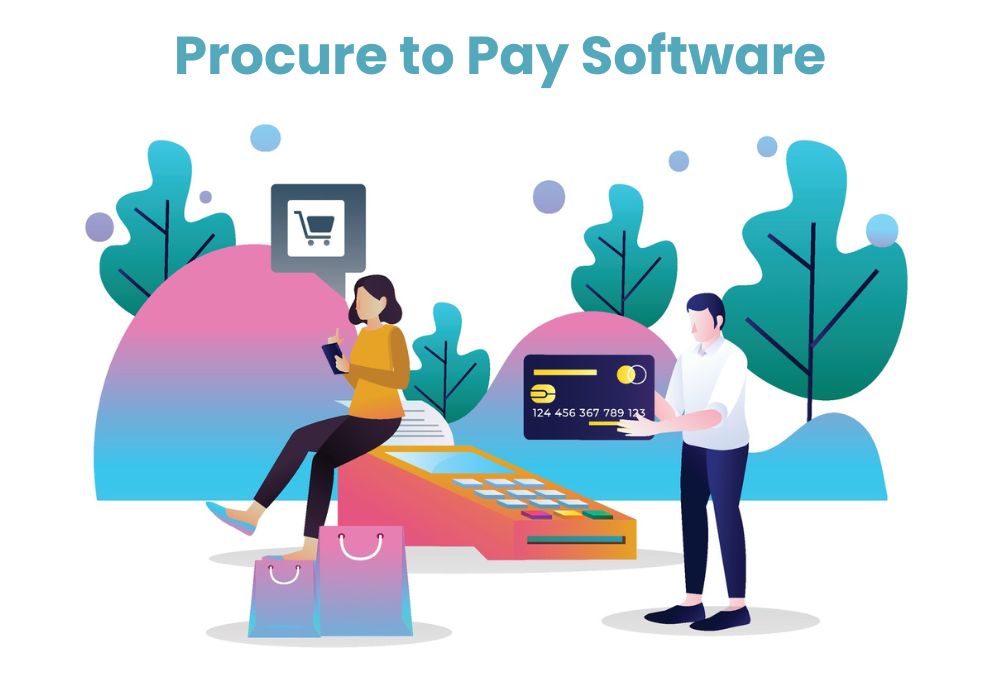
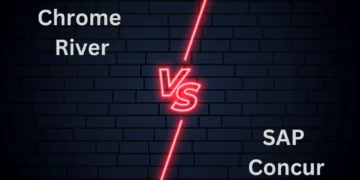
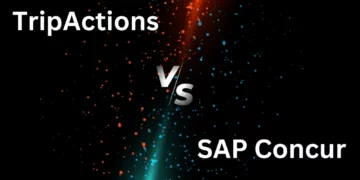
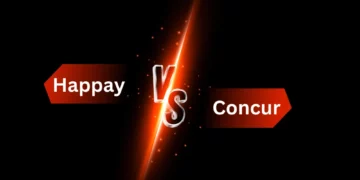
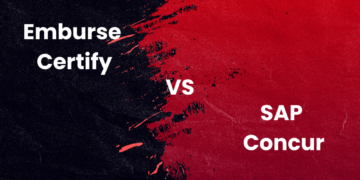
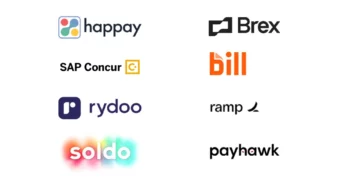
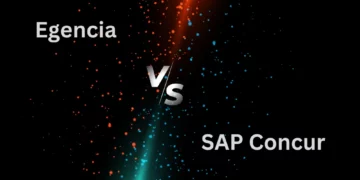


Discussion about this post